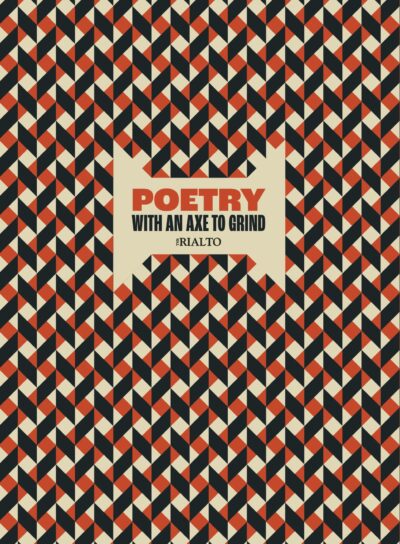If I invert Sir Philip Sidney’s famous maxim (‘to teach and to delight’) I get a statement, of sorts, that the key to learning to be a reader of poetry is in the ability to learn and to be delighted.
And here’s something that will help tune you in. It’s a pamphlet from Candlestick Press in a lavender (French lavender) coloured card cover with an image by Beth Krommes, Ten Poems About Sheep (ISBN 9781907598111, £5.95). This niche series is pushing towards twenty titles: the pamphlets come with a classy plain envelope and a bookmark with plenty of space for ‘your message’ – clever gift packaging.. As well as the topics you’d expect – Cats, Dogs, Gardens, Love – there are the unexpected, Ten Poems About Bicycles, Ten Poems About Puddings, and this one. There’s several very classy editors, Carol Ann Duffy (working on Christmas), Jenni Murray, Monty Don. The sheep poems are chosen by Neil Astley, exceptional editor of large anthologies, who manages this miniature example with typical panache.
The pastoral tradition in poetry is a vast topic ( Is John Clare a genius master of the Matter of England, or a country bumpkin who can’t spell?)( Thomson or Vergil: who was more important in moulding Wordsworth’s sensibility ?) etc. Neil Astley cuts past all this and goes for poems that are about sheep (not shepherds, or man in nature, or whatever) by poets who have worked with sheep – have had their fists tangled in their greasy hair, held them and sprayed their magotty arses. Ted Hughes, Josephine Dickinson, Gillian Clarke etc., poets who see sheep as sheep, animal first, metaphor second.
The bright shock for me was when the pamphlet fell open on page 10 and I found that I was reading Hughes’ poem ‘February 17th’: forty five lines (too long for your average poetry competition) that I’d pushed into the ‘things to be avoided’ corner of my mind. Bang: here in the first sentence was the memory of Hughes’ voice ‘A lamb could not get born’. Clean syllables, a flat statement, the resonant accent of the man bouncing from vowel to vowel. It’s a grim poem, no flinching, about Hughes, who kept sheep, working to save the life of a sheep whose lamb had died in the birth canal.
It reminds me of a passage I found in one of those books, possibly that odd treatise Aristotle’s Works, that I turned to in my teens (no internet then) trying to discover the nature of conception and birth, where I found the gruesome tools and methods the physician needs to deal with obstetric misadventures. I suppose it did at least help with that question frequently asked in old time melodramatic fiction, ‘Shall I save the mother or the child?’
I notice that I’ve slid away from sheep, in a way that these chosen poems mostly manage not to. Astley says in his brief introduction; ‘sheep behaviour assists survival, whereas human herd behaviour is unthinking, undermining and courts disaster. It is surely time we celebrated sheep for being sheep and for behaving like sheep, even when held captive by carnivorous humans’.
Jo Shapcott’s ‘Lies’ opens, ‘In reality sheep are brave, enlightened/ and sassy.’ It’s a very sophisticated poem, a joy to read. Humans tell lies about sheep – ‘sheepish’, ‘like lambs to the slaughter’ etc., possibly to stay comforted in their predatory role. Jo Shapcott tells lies in her poem, ‘they are walking clouds’, but the lies delight, and we learn to look and to feel.
Gillian Clarke provides an antidote to Hughes with her ‘A Difficult Birth, Easter 1998’ –
‘This is when the whitecoats come to the women,
well-meaning, knowing best, with their needles and forceps.’
though she does roll rather more than plain sheep into her poem. And the other poets present are Christina Rossetti, David Scott, Josephine Dickinson, Ruth Bidgood.
My own sheep story is from childhood. We lived in an isolated oval of pebble dash houses on the edge of suburbia, mostly semis, rushed up by a builder in 1939. This oval of houses was set around a patch of grass – the Green. We lived at the far end of the oval, away from where the road came into the Green. I was alone in the house one day when a man and a dog and a flock of sheep came into the Green and straight towards our house. The dog kept the sheep in a tight bunch and they trotted along steadily. I don’t quite know what I was doing in my parent’s bedroom, but I watched from their upstairs window. The house next door was empty and the sheep went straight through the front gate, down the side of the house, through the garden (the back fence had been used for kindling during the war) and out into the fields beyond, where they continued on and were lost to sight. Nobody believed me when I told about the sheep. It was daytime and the men were away at work, the women in the kitchens, downstairs at the back of the houses. The next time I saw these sheep was several years later in a picture by Samuel Palmer, ‘The Flock and the Star’.
Ten Poems About Sheep is a must have must read little wonder. Available from Candlestick Press, Diversity House, 72 Nottingham Road, Arnold, Nottingham NG5 6LF www.candlestickpress.co.uk
Michael Mackmin
P.S. The Rialto published Josephine Dickinson’s sheepful first collection Scarberry Hill. There are still a few copies left.





